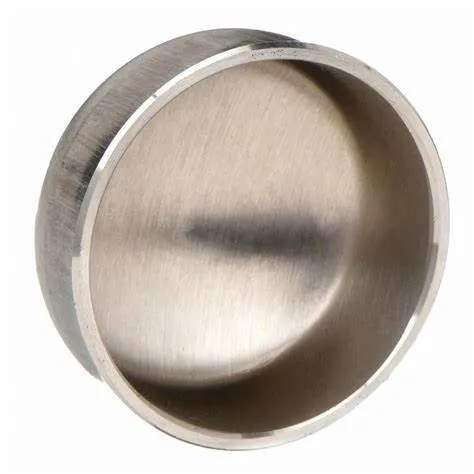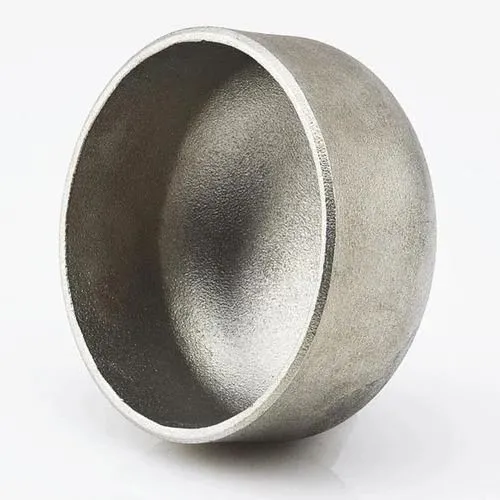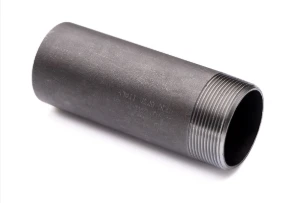JIS B2311 là Tiêu chuẩn Công nghiệp Nhật Bản bao gồm các phụ kiện đường ống hàn đối đầu, bao gồm cả các nắp được sử dụng trong hệ thống đường ống. Mũ hàn đối đầu phục vụ mục đích đóng đầu ống, tạo ra một vòng bịt để tránh rò rỉ hoặc nhiễm bẩn. Dưới đây là phần giới thiệu về mũ hàn đối đầu JIS B2311:
- 1. JIS B2311 Standard:
- - Tiêu chuẩn JIS B2311 quy định các yêu cầu về thiết kế, kích thước, vật liệu, chế tạo và thử nghiệm các phụ kiện hàn đối đầu, bao gồm cả nắp, trong hệ thống đường ống.
- - Tiêu chuẩn đảm bảo mũ được sản xuất theo tiêu chuẩn JIS đạt tiêu chuẩn chất lượng và tương thích với các bộ phận đường ống khác.
- 2. Mũ hàn mông:
- - Nắp hàn đối đầu, theo JIS B2311, là một phụ kiện được thiết kế để che và bịt kín đầu ống một cách an toàn, mang lại sự bảo vệ và duy trì tính toàn vẹn của hệ thống đường ống.
- - Nắp được sử dụng trong trường hợp đầu ống cần đóng vĩnh viễn hoặc tạm thời để tránh rò rỉ, nhiễm bẩn hoặc để hoàn thiện hệ thống.
- 3. Vật liệu và kết cấu:
- - Mũ hàn đối đầu theo tiêu chuẩn JIS B2311 có nhiều chất liệu khác nhau như thép cacbon, thép không gỉ, thép hợp kim để đáp ứng các yêu cầu ứng dụng khác nhau.
- - Các nắp này được sản xuất bằng phương pháp xây dựng tiêu chuẩn để đảm bảo kết nối chắc chắn và không bị rò rỉ khi hàn vào đầu ống.
- 4. Ứng dụng và lợi ích:
- - Mũ hàn đối đầu được ứng dụng trong nhiều ngành công nghiệp khác nhau, bao gồm dầu khí, quy trình hóa học, nhà máy xử lý nước, v.v. khi các đầu ống cần được đậy nắp an toàn.
- - Mũ bảo vệ đầu ống khỏi các yếu tố môi trường, ngăn ngừa ô nhiễm và giúp duy trì sự sạch sẽ và toàn vẹn của hệ thống đường ống.
- 5. Lắp đặt và hàn:
- - Thực hành lắp đặt đúng cách, bao gồm căn chỉnh chính xác, chuẩn bị đầu ống và kỹ thuật hàn, là những điều cần thiết khi lắp đặt mũ hàn đối đầu để đảm bảo bịt kín và chống rò rỉ.
- - Hàn là phương pháp phổ biến để gắn nắp vào ống, mang lại sự đóng kín an toàn và lâu dài, có thể chịu được áp suất, sự thay đổi nhiệt độ và dòng chất lỏng trong hệ thống.
- Tóm lại, nắp hàn đối đầu JIS B2311 là bộ phận quan trọng được sử dụng trong hệ thống đường ống để bịt kín và bảo vệ đầu ống một cách an toàn. Những nắp này tuân thủ các yêu cầu tiêu chuẩn hóa để đảm bảo chất lượng, độ tin cậy và khả năng tương thích trong các ứng dụng công nghiệp nơi cần đóng và bảo vệ đường ống.
What Is a Butt Welding Cap and How Is It Used in Industrial Piping?
In industrial piping systems, end-of-line sealing and branch closures require robust solutions. A butt welding cap serves as a critical component for terminating pipes securely. By providing a seamless, welded closure, this fitting maintains system integrity, prevents leaks, and supports compliance with industry standards.
What Is a Butt Welding Cap?
A butt welding cap—also called a pipe end cap or buttweld end cap—is a round fitting designed to close off the end of a pipe. It’s manufactured to match the pipe’s outer diameter and schedule, with either a hemispherical or flat face. To install, both the pipe end and cap are beveled to form a V‑groove, enabling full‑penetration, fusion welds. Common materials include carbon steel, stainless steel, nickel alloys, and other engineered grades, chosen to satisfy pressure, temperature, and corrosion‑resistance requirements.
How Is Butt Welding Cap Used in Industrial Piping?
Butt welding caps find application across oil & gas, petrochemical, power generation, water treatment, and general process industries for both permanent and temporary closures. During hydrostatic testing, technicians install caps to seal off sections of piping while monitoring for leaks. In new construction or retrofit projects, caps terminate branch lines, future tie‑in spools, or dead‑end mains until system expansion. Welders prepare each joint by cleaning and beveling surfaces, aligning the cap precisely, and executing a root pass followed by filler passes per the qualified Welding Procedure Specification (WPS). Post‑weld heat treatment and non‑destructive examination (NDE)—such as radiography or ultrasonic testing—verify weld integrity and compliance with ASME B16.9 and related standards. Additionally, temporary caps enable safe isolation during maintenance, allowing for segment testing and dewatering under regulatory protocols.
Benefits and Best Practices
Butt welding caps offer a smooth‑bore transition that minimizes flow disruption and stress concentration. Their full‑penetration welds deliver exceptional structural strength and leak resistance. To optimize performance, engineers should:
Select caps with matching material grades and wall thicknesses
Adhere to proper bevel angles and joint fit‑up tolerances
Follow qualified WPS protocols rigorously
Consider cladding or protective coatings in corrosive environments to extend service life
Regular inspection and thorough documentation ensure long‑term reliability and safe operation under demanding conditions.
Butt welding caps are indispensable components for achieving durable, leak‑proof pipe terminations in a wide range of industrial applications.
Butt Welding Cap FAQs
What is a butt welding cap?
|
What materials are commonly used?
|
What standards govern butt welding caps?
|
How are butt welding caps installed?
|
Where are butt welding caps typically used?
|
What are the advantages of threaded caps?
|
















